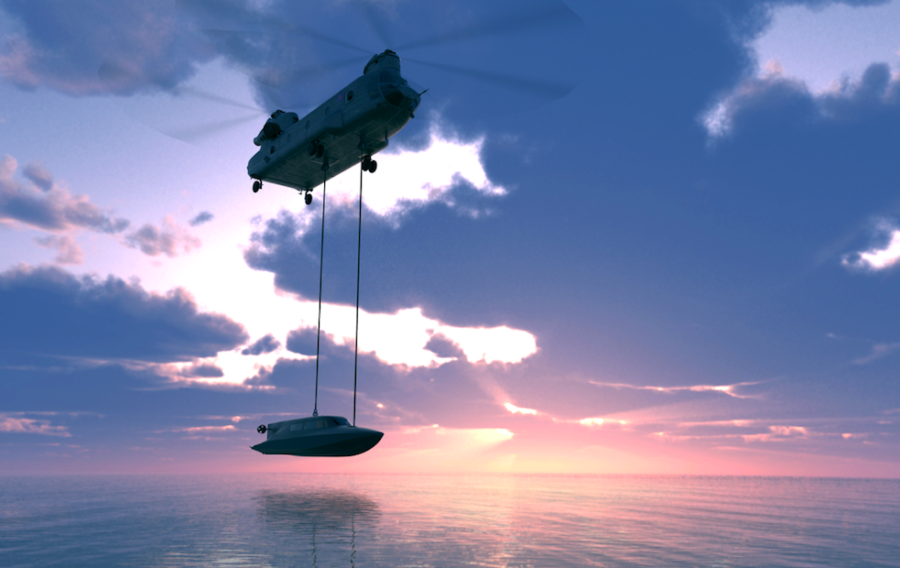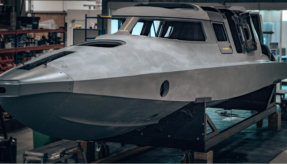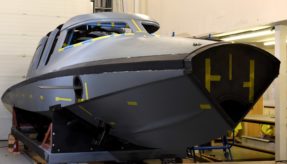
Writing for Defence Online, Professor John Louth, non-executive director at Subsea Craft Ltd, highlights the need for advanced technology that has the ability to penetrate anti-access bubbles and, where necessary, burst them.
For a decade, up until last year, I was employed as a research director within the Royal United Services Institute for Defence and Security Studies (RUSI), the oldest and most prestigious defence think tank in the world.
I also worked in a number of universities and business schools supervising and examining PhD students and teaching on Masters’ programmes.
My speciality was conceptualising Defence as a complex public-private ecosystem with myriad dynamic parts, from the military itself to large, international manufacturers and small, niche technology houses. I was invited to talk about my research all over the world, from Washington DC to Seoul.
When not travelling, much of my time was spent writing books, contributory chapters, occasional papers and articles on this topic: some influential perhaps, others most definitely not so. A seminal moment occurred with a particular opinion piece I published in the Spectator.
A British general took exception to it and suggested, with excruciating politeness, that rather than commenting on others’ efforts – “marking their homework” in his terms – I should get some “skin in the game” and contribute overly to Defence capability generation. His intervention was significant because he was right: 2020 should prompt and prioritise action over prose.
This is because Western powers face a perfect storm of threats and risks. Western military advantage is receding. The availability to rival powers of sophisticated intelligence, surveillance, reconnaissance and advanced weapons’ systems means that even relatively modest states or non-state actors can create bubbles of control around their key physical interests.
My colleague, Professor Peter Roberts of RUSI, points out that in Libya after 2010, for example, the deployment of sophisticated man-portable air-defence weapons rendered the control of the air impossible to NATO partners, even for sophisticated air forces with mixed fleets of manned aircraft and drones.
The arrival of triple-digit surface-to-air missiles will extend that bubble for sure. Capabilities such as these will prevent Western forces from operating in their areas of choice to an extent where large, conventional forces may not be survivable on tomorrow’s battlefields.
Indeed, US Deputy Secretary of Defense, Bob Work, told me in 2015 that the UK should disaggregate their forces in favour of smaller, more flexible units that could seek sanctuary beyond the range of major guided weapons’ systems, or to hide within the bubbles being contested. Thinking at the time was that the seam between the sea and sub-sea offered the best way of accessing, hiding and operating within such bubbles.
For me, the future operating environment will require militaries to provide politicians with a different set of potential responses to security crises. Rapidly deployable, disruptive, and forward-deployed systems will be needed to ensure messaging and action are available to meet desired outcomes.
Options will need to be capable of prolonged deployments, multiple actions, with flexibility in payloads, mission specifics, and profiles. Militaries will need to be able to conduct activities that contribute to diverse outcomes, moving easily from poise, deterrence, and coercion to engagement, disruption, and direct action.
For states wishing to have greater influence, such military options that provide unique and niche capabilities will become highly prized. Chief among these will be assets that possess the ability to penetrate 21st Century anti-access bubbles, and – where necessary – burst them.
Consequently, if the mission is to get inside denied areas (for insight, intelligence, and covert leadership interaction), to provide response options to politicians (for example in hostage rescue), as well as options to take the initiative (mining harbours or ships, sewing cyber payloads into critical national infrastructure, preventing air craft launches, for example), an asset that has the following characteristics could be a game changer.
The requirement must meet the need for an extended over the radar horizon deployment, fast insertion, with a low radar profile exterior, a crew payload of at least six operators (or a NATO one ton pallet), the option to submerge at key points of radar coverage, the ability to loiter or remain on station, and to covertly self-deploy drones, buoys and bodies into the adversary’s bubbles of control and, of course, depart without detection. Such systems may well work alone (as with current platforms), but increasingly will work in teams or swarms to overwhelm an enemy’s kill chain system.
Ideally such assets will need to be forward deployed and maintained in several locations globally in order to meet the challenges of multiple dilemmas posed by adversaries. They will need to be air transportable by commercial and military aircraft, or in standard ISO containers, and should exceed vertical airlift and deployment restrictions associated with current military helicopters.
Operation will require a simple Human-Machine-Interface, ideally designed by military operators who understand the realities of operations under considerable stresses. Moreover, options around maintenance and ownership will form a key part of the system solution for such missions.
Given the financial models many militaries operate under, opportunities exist for a partnership with industry to minimise purchase price, and contract for availability, or to have the craft commercially maintained and forward deployed by a trusted commercial partner for military use.
So, my need to address the general’s challenge began with a search to find a business that considered the security challenges in the same manner as me and was conceptualising a capability that could penetrate defences and offer significant benefits to Western forces, as outlined above.
This brought me to Subsea Craft Ltd and the company’s key offering, VICTA. In its build and trial phase, VICTA takes world-leading technologies, integrates them into a seamless user experience, and offers an affordable defence solution for friendly powers seeking to operate in an era dominated by the concept of anti-access.
It has many characteristics: at one moment, it is a conventional diver delivery unit, delivering special forces operatives to mission at speed and reach. At another, VICTA operates in the littoral across a plethora of intelligence, surveillance and reconnaissance roles.
It is a stand-alone asset, off-grid and hidden from friend and foe alike. It can be also part of a complex, nodular, cat’s cradle of capabilities integrated across multiple domains and partner nations. It has both a physical and digital character, with the digital twin and thread offering significant through-life mission, support, learning, schedule and cost benefits.
Much of my time now is committed to VICTA as a non-executive director – I have my “skin in the game.” My contention is that VICTA offers a capability to both political decision maker and the military operator that keeps them in the game also.
If you would like to join our community and read more articles like this then please click here







